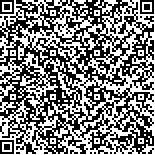下载中心
优秀审稿专家
优秀论文
相关链接
摘要

遥感卫星在空间环境运转过程中,星敏感器的姿态角、成像相机的镜头和CCD等几何参数会发生不可预估的变化,从而对卫星影像的定位精度产生影响。因此,对卫星影像进行自检校区域网平差处理是实现卫星影像精确定位的一项关键技术。本文以"天绘一号"卫星为研究对象,首先分析了"天绘一号"卫星三线阵立体测绘相机的镜头和CCD几何形变,并提出了适用于"天绘一号"卫星三线阵CCD影像的自检校模型;然后建立"天绘一号"卫星三线阵CCD影像的自检校区域网平差模型,对外方位元素和自检校参数进行整体平差,消除存在于外方位元素观测值和自检校标定值中的系统误差,以提高卫星图像定位精度。最后利用嵩山实验场对"天绘一号"卫星三线阵CCD影像进行了自检校区域网平差处理,验证了自检校模型和自检校区域网平差模型的正确性和有效性,并分析研究了不同数目的控制点条件对自检校区域网平差的影响。实验结果证实采用自检校区域网平差技术可以有效地消除系统定位误差,显著提高定位精度。
Launched in 2010, "Mapping Satellite-1" (TH-1) is the first stereo surveying and mapping satellite from China. During thereal operation of TH-1 in the space environment, the attitude angles of the star sensor, lens geometric parameters, and CCD undergo unpredictable changes that affect the positioning accuracy of satellite images. This study conducts self-calibration block adjustment research on TH-1 satellite images to achieve high image positioning accuracy. The following investigation method is used in this study: First, the lens and CCD geometric distortions of the three linear stereo surveying and mapping cameras of TH-1 are analyzed, and a self-calibration model suitable for the satellites three linear CCD images is proposed. The self-calibration block adjustment model is built for the satellites three linear CCD images. Overall adjustment is then applied on exterior orientation elements and self-calibration parameters to eliminate systematic errors present in the above observations and to improve the position-ing accuracy. Finally, the Songshan testfield is utilized to support the self-calibration block adjustment processing for the three linear images of TH-1 and to verify the correctness and validity of the self-calibration and self-calibration block adjustment models. The influence of the number of control points on self-calibration is also analyzed. Experimental results demonstrate that using the self-calibration block adjustment technique can effectively eliminate systematic positioning errors and significantly improve positioning accuracy. The spatial resolution of the three linear array images of TH-1 is 5 m. After normal block adjustment, the optimal plane accuracy along the X- and Y-directions are approximately 20 m, with a height accuracyofapproximately 20 m and plane accuracy of 4 pixels. After self-calibration block adjustment, the optimal plane accuracy increased from 5 m to 6.5 m (i.e., less than 1.3 pixels), and the height accuracy increased to 5 m. Through a series of experimental research and analysis, the following conclusions can be drawn: (1) The auxiliary orbit and attitude determination files of the three linear CCD images of TH-1 contain clear systematic errors. A certain degree of geometric deformation also exists in the camera lens and CCD component. For direct space intersection using orbit and attitude determination files, a prominent systematic positioning error must be eliminated through the block adjustment approach. (2) If the self-calibration parameter Xs and its observation equation are not considered, Eq.(10) becomes the normal block adjustment model. Normal block adjustment considers only the control point error Xg and exterior orientation element error X; thus, it corrects only the attitude errors. Although normal block adjustment can effectively eliminate the positioning error caused by the attitude angle error, the impact of the lens and CCD component geometric deformation parameters still exists. The variation of the latter parameters is minor in a medium period, and the residual errors in the plane and elevation direction are still systemic. (3) Applying self-calibration block adjustment to the three-line array images of TH-1 with the self-calibration model presented in this paper can effectively eliminate the attitude errors and the combined effects of the focal length change, lens, and CCD geometric deformation and significantly improve positioning accuracy. The residual systematic errors of the checkpoints are effectively eliminated after self-calibration adjustment, which confirms the correctness and effectiveness of the self-calibration parameter and self-calibration block adjustment models presented in this paper. (4)Increasing the control points can efficiently improve the accuracy of self-calibration block adjustment in an appropriate range, but when the number of control points reaches a certain degree, the adjustment accuracy stabilizes.

